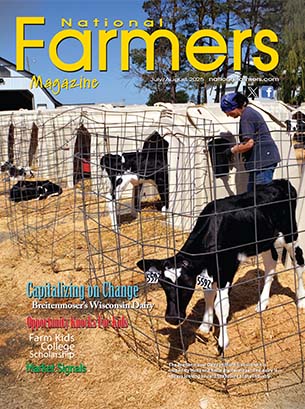GMP Members Urged to Consider Scale-Up, Trap Pricing Approach If Weather Rally Occurs
By Matt Brandyberry
By using the Grain Marketing Plus framework, farmers can achieve better revenues. The framework recommends being active marketers during the spring through early summer planting season. Looking back at historical yearly price action, the board has rallied to yearly price highs during this time frame. We recommend using scale-up pricing, trap pricing, or a combination of both to best take advantage of a weather-related rally should it occur.
Scale-up pricing means making sales incrementally at specific pricing intervals. As price levels improve, increase the number of bushels we would sell for you during the seasonal uptrend.
Regarding trap pricing, during planting time price improvements will commonly occur together over a number of days. After so many buy signals, the market breaches into overbought territory.
The trap pricing concept means a producer should ride out the uptrend for as long as possible, and just as the market is about to sell off, make a large sale. We can help tell you when that is about to occur, based upon multiple market factors and indicators.
Another recommendation is to make certain all 2019 crops are sold before the middle of June— at the latest—and forward contract at least 30 percent of your new crop.
This year, corn production may hit all-time highs, because the trade expects 97 million acres or more will be planted. Ethanol use has been cut, as margins to produce the corn by-product are not profitable and plants close temporarily, or permanently. New crop corn ending stocks are projected over 3 billion bushels. Be prepared to make larger than normal sales or many separate sales in a short period if a planting time weather-related rally lifts prices.
Soybean ending stocks have decreased considerably from 2018, but price action hasn’t picked up on it yet. Preliminary new crop ending stocks projections may drop below 400 million bushels. Talk to us about current spread differences from November 2020 futures to March 2021 or May 2021. We may want to take a rolling futures approach, using a basis agreement to later board months. That will add to basis, earn spread gains upon the return from an inverted to a normal market and allow for futures to get back to the fundamentals.
This is one of several years we’ve experienced where wheat acres have been extremely low, dating back to 1919. On the demand side, the coronavirus led to wheat bread flying off the grocery shelves. These factors should allow for 2020 wheat crops to be sold at bullish prices before the end of harvest, straight to a preferred delivery location and buyer.
Call me with the latest advice on coping with markets. (765) 490-2864. Have a safe planting season.










